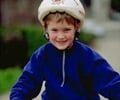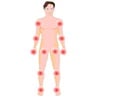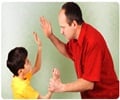Scientists have said that children in their first year of life already have a basic theory of mind that enables them to distinguish their own beliefs from those of others.

Professor Dr Albert Newen and Dr Leon de Bruin from the Institute of Philosophy II at the Ruhr-Universitat have explained their theory.
The fact that even one year olds are able to distinguish other's beliefs was established on the basis of a 'false belief' test.
The test is this - Sally puts her ball into a basket and goes for a walk. Now Anne appears, takes the ball from the basket, and places it in a box. Then Sally comes back. Where will she look for the ball - in the box or in the basket?
The results of the 'false belief' test have so far shown that four-year-old children are able to put themselves into Sally's shoes and give the correct answer: "in the basket". Younger children, by contrast, simply attribute their own belief to Sally and answer incorrectly: "in the box".
However, non-verbal versions of the false belief test indicate that they expect Sally to look for the ball in the basket. For example, seven to twelve month-old infants look reliably longer when Sally looks in the box instead of the basket.
Advertisement
"We assume that infants initially establish an association between Sally, the object, and the location of the object, which is based on the observation of Sally's activity," said Newen.
Advertisement
Newen and de Bruin's dual-system theory says that the association module and the operating system interact from the beginning of life. This allows young children to form increasingly complex associations by observing the actions of others.
The theory distinguishes three kinds of associations. Young infants initially develop action-based associations; they understand others in terms of their movements towards objects. Afterwards, perception-based associations emerge: Children become capable of understanding another agent on the basis of his or her visual perspective.
Finally, they learn to understand others in terms of symbol-based associations. Children are only capable of passing verbal versions of the false belief test when they have mastered this last stage. Before this point, however, they may already succeed on non-verbal versions of this test, as these only require simpler association formats.
"We developed the details of this theory while keeping a close eye on recent empirical findings.
"We have also advanced the philosophical discussion by presenting a fundamental theory about a basic capacity - namely, the understanding of other people," said Newen.
Newen and de Bruin have explained their theory in the journal 'Cognition'.
Source-ANI









